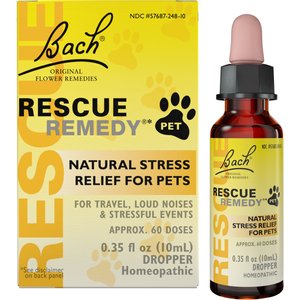When thinking about pets and tornadoes, many of us picture “The Wizard of Oz,” when Dorothy frantically searches for Toto while the tornado approaches in the distance. It is one of the scariest scenes in the film, and something most kids never forget.
If you live in tornado country, you know how frightening these storms can be in real life. Tornado safety should be paramount for you and your family.
If you live someplace where you have both pets and tornadoes, you need to be especially prepared, according to the Humane Society of the United States (HSUS), an organization that provides rescue services to pets affected by natural disasters. The society provides guidelines for pet owners to help them prepare for a tornado.
1. Have a Plan.
It’s important to know in advance what you plan to do before a storm hits. Not only that, but you should practice your plan in case of an emergency.
“Practice your ‘in place’ plan,” says Sára Varsa, vice president of the HSUS Animal Rescue Team. “If this is to put your pet in a carrier and get in a bathtub with a mattress over you, practice this plan, so it is not foreign when a real crisis strikes.”
The practice also will help your pet become more comfortable with getting into her carrier, and that could save precious time.
“Making sure your animals are comfortable in a carrier or crate is also essential to evacuation and sheltering in place,” Varsa says.
2. ID Your Pets.
Make sure your pets have visible, up-to-date identification tags on their collars. Using a pet ID tag that comes with a pet finding service increases the likelihood you’ll be reunited with your lost dog or cat. For example, Platinum Pets’ pet finder tag includes an ID number that corresponds with your contact information, which is located on the Pawsitively Safe website.
Consider microchipping your pets, too. Having your pet microchipped significantly increases your chances of being reunited with your dog or cat should he become separated from you, according to the HSUS.
Most veterinary offices and animal shelters are able to read a microchip and obtain your contact information from the registering company. You can get your pet microchipped at a veterinary hospital.
3. Create a Disaster Kit.
“If you live in a tornado-prone area, it is imperative you have a to-go bag and emergency kit for every animal in your family,” Varsa says. “You may be forced to leave on a moment’s notice or hunker down with your animals safely contained.”
Varsa says to keep five to seven days of pet food and water in your to-go bag as well as all critical items, such as:
- bowls for food and water,
- plastic bags,
- paper towels,
- toys,
- current photos of your pet,
- a two-week supply of medications,
- your pet’s vaccination records, and
- a first-aid kit.
For your dog’s kit, consider keeping dog treats, such as American Journey’s oven baked dog treats. Keeping a box of training pads, like Frisco’s Premium potty pads, with your emergency supplies can help if your pup needs to relieve himself before it’s safe to go outdoors.
Your cat’s kit should include some litter and a litter box, like Frisco’s high sided cat box, in case you and your cat need to spend an extended amount of time sheltering against oncoming storms.
4. Bring Pets Indoors.
If the weather turns, bring your pets indoors and secure them.
“Having cats and small dogs in carriers and large dogs on a leash/dog harness with visible collars and tags is essential to ensuring they are not lost or can’t get away from you during the storm,” Varsa says.
The dog crates should be large enough for your pet to turn around and lie down comfortably as well as allow room for his dog food and water dish. A cat’s crate should be large enough to hold a small cat litter box as well.
5. Keep Pets Calm.
To help keep your pet calm when a storm hits, talk soothingly to him and refrain from shouting or acting afraid. He can sense your anxiety and react in kind.
Keep calming products on-hand to help your pet stay relaxed. Comfort Zone’s calming cat spray can help encourage your cat to remain relaxed and stress-free. Or, try giving both dogs and cats a dose of Rescue Remedy’s stress relief supplement.
“It is most important to keep your pets safe before, during and after a tornado, [and] being with you and contained is the best option for this, ” Varsa says. “Remember, their homes and communities may not look or smell like they did pre-storm.
“Ensure you are not letting dogs off leash, as they may be disoriented and become lost in the unfamiliar or disturbed surroundings,’ she says. “Putting a beloved toy or bed in a carrier may help to reduce stress, as well. Consult your veterinarian beforehand on other options that may be beneficial for your pets.”
Following a disaster, the HSUS says to remain patient with pets, try to get them back into their normal routines as soon as possible and be ready for behavioral problems that may result from the stress of the situation. If behavioral problems persist, or if your pet seems to be experiencing any health problems, talk to your veterinarian.
6. Know the Weather Terminology
Before a storm hits, it’s critical to know tornado terminology. Authorities send out alerts to warn residents of tornado threats, so it’s vital to understand the language they use.
According to AccuWeather.com, a “tornado watch” means conditions are ripe for a tornado. Take precautions by bringing pets indoors in case a tornado touches down. If a twister actually is spotted, usually by radar, authorities will issue a “tornado warning.”
In either situation, be prepared to take shelter. Keep your radio or local television station on so you can find out if a storm is headed your way. Remember, you probably have less than 15 minutes after a tornado warning is issued to get yourself, your family and your pets to safety.
By: Audrey Pavia
Featured Image: Chewy Studios
Share:















